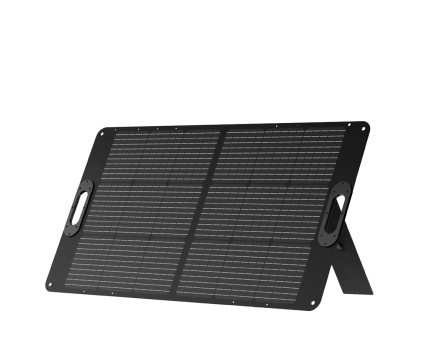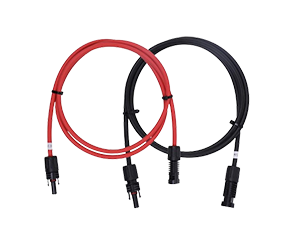
Understanding Lithium Batteries
Lithium-ion batteries power nearly everything in modern life—from mobile phones and laptops to electric vehicles and portable energy storage units. These batteries are valued for their high energy density, light weight, and consistent power output. However, they are not immune to aging. Over time, their chemical components wear down, reducing capacity and performance.
The way you charge and discharge a lithium battery has a direct impact on how long it lasts. Among the many tips for maintaining battery health, one simple yet effective rule stands out—the 40–80 rule. Following it can help preserve both capacity and safety across years of use.
What Makes Lithium Batteries Unique?
- They store large amounts of energy in compact cells.
- They have low self-discharge rates, allowing long standby periods.
- They require built-in protection circuits to prevent overcharging or deep discharging.
- Each cell's voltage typically ranges from 2.5V (empty) to 4.2V (fully charged).
What the 40–80 Rule Means
The 40–80 rule is a practical charging strategy designed to protect lithium batteries from premature aging. It suggests keeping the charge level between 40% and 80% rather than charging to 100% or letting it fall near zero.
In simple terms, the rule encourages users to operate their battery within its most stable zone. Avoiding extreme highs and lows reduces voltage stress, heat buildup, and chemical degradation—three of the main causes of capacity loss.
Summary of the Rule
- Don't let the battery drop below 40% before recharging.
- Stop charging around 80% instead of going to full capacity.
- Reserve 100% charging only when maximum runtime is needed, such as during travel or emergencies.
Why the Rule Matters
Every lithium battery has a limited number of charge cycles. A full cycle represents one complete discharge from 100% to 0% and back to full. The 40–80 rule helps spread these cycles more evenly, reducing the wear that comes from extreme states of charge. It's not about denying your device power—it's about using it wisely to preserve long-term health.
Benefits of the 40–80 Rule
- Extends Lifespan: Batteries maintained between 40% and 80% typically last several times longer than those regularly charged to 100%.
- Enhances Safety: Avoiding high voltage levels reduces the risk of overheating or internal short-circuits.
- Improves Efficiency: Moderate voltage ranges allow more stable energy output.
- Maintains Consistent Capacity: Slows down degradation of the active materials inside the cells.
How It Actually Extends Battery Life
Lithium batteries wear out due to chemical reactions inside the cell. Each time you charge and discharge, small irreversible changes occur in the electrodes. The deeper the charge cycle, the greater the strain. By charging only between 40% and 80%, you keep the reactions within a less stressful range, significantly extending the usable lifespan.
Cycle Life Comparison
| Charge Range | Approximate Cycle Life | Expected Capacity After Years of Use |
|---|---|---|
| 0–100% | ≈ 500 cycles | ≈ 80% after 2 years |
| 20–80% | ≈ 1,500 cycles | ≈ 90% after 3–4 years |
| 40–80% | ≈ 3,000+ cycles | ≈ 95% after 5+ years |
In practical terms, this means a device following the 40–80 rule could last years longer than one that is constantly charged to full. The gain in longevity easily outweighs the small loss in runtime per charge.
The Science Behind the Rule
To understand why the rule is effective, it helps to know what happens at the microscopic level inside a lithium cell.
1. Voltage and Chemical Stress
At 100% charge, each cell operates near 4.2 volts—a range that accelerates chemical wear. The electrolyte becomes unstable, and the protective film on the anode thickens, trapping lithium ions. Over time, this layer grows, permanently reducing capacity.
2. Damage from Deep Discharge
When a battery is discharged too far (below roughly 20%), copper from the internal structure can dissolve into the electrolyte. On the next charge, that copper may deposit unevenly, creating microscopic shorts or increasing resistance.
3. Temperature Effects
Operating at extreme voltages—either high or low—also generates more heat. Elevated temperatures accelerate chemical reactions, speeding up degradation. Keeping the charge within the 40–80 window naturally limits heat buildup.
How to Apply the 40–80 Rule in Real Life
1. Avoid Always Charging to 100%
If your device allows, set a maximum charge limit around 80%. Many smart charging systems and battery management apps let you control this. Otherwise, unplug manually once it reaches roughly four-fifths full.
2. Recharge Before Dropping Too Low
Don't wait until your battery reaches 10% or shuts off completely. Start recharging around 40–50%. This reduces the depth of each discharge cycle, which has a direct impact on how long the cells last.
3. Storage Best Practices
If you plan to store a lithium battery for a long period, keep it at about 50–60% charge and store it in a cool, dry place. Fully charged or empty batteries deteriorate faster when stored.
4. Occasional Calibration
For devices that estimate charge percentage, it can be useful to do a full 0–100% cycle occasionally to recalibrate the battery gauge. This should be rare—perhaps once every few months—not part of daily routine.
Full Charge vs. 40–80 Charging: A Comparison
| Aspect | Full 0–100% Charging | 40–80% Charging |
|---|---|---|
| Cycle Life | ≈ 500 cycles | ≈ 3,000+ cycles |
| Operating Voltage | High (up to 4.2V) | Moderate (3.7–4.0V) |
| Thermal Output | Higher | Lower and stable |
| Energy per Charge | Maximum | Slightly reduced |
| Degradation Rate | Fast | Slow |
This table highlights the trade-off between short-term convenience and long-term health. Charging to 100% gives the longest use per charge, but partial charging preserves far more total energy over the battery's life.
When the Rule Doesn't Apply
While the 40–80 rule works for most daily uses, there are certain cases where you may choose a different approach.
1. Backup or Emergency Devices
For emergency power units or equipment that may sit unused for months, it's reasonable to keep the battery closer to full so it's ready when needed.
2. Long Trips or Remote Work
If you'll be without access to charging for a long time, fully charging before departure is fine. Occasional full cycles will not cause major harm.
3. Temperature-Controlled Conditions
When batteries are kept at moderate temperatures (around 20–25°C / 68–77°F), the effects of full charging are less severe. Stable environments slow down the chemical reactions that cause aging.
Additional Battery Care Tips
Keep Temperatures Moderate
Heat is one of the worst enemies of lithium batteries. Avoid exposing them to direct sunlight, enclosed vehicles, or hot charging environments.
Prefer Slow Charging
Fast chargers are convenient but often increase heat and stress. Whenever possible, use a standard charger that replenishes power at a steady rate.
Store at Partial Charge
When storing for more than a few weeks, charge to about half capacity and disconnect the battery from devices. Check it every few months and recharge slightly if it drops below 40%.
Avoid Continuous Heavy Loads
Running a lithium battery under constant high demand shortens its lifespan. If powering energy-hungry devices, allow cool-down periods or operate within moderate output ranges.
FAQ
1. What exactly is the 40–80 rule?
It's a guideline that suggests keeping lithium batteries charged between 40% and 80% for most of their life. This reduces chemical stress and extends usable lifespan.
2. Does following the rule really make a difference?
Yes. Research and practical experience show that batteries kept in this range can last several times longer than those charged fully or deeply discharged often.
3. Is it ever okay to charge to 100%?
Occasionally, yes—such as before travel or heavy use. Just avoid keeping it at 100% for long periods, as that's when chemical wear accelerates.
4. What happens if I ignore the rule?
Your battery will still function, but it will lose capacity faster. Over time, you'll notice shorter runtimes and earlier failure.
5. Should I let the battery fully discharge sometimes?
Only occasionally, if your device needs recalibration. Regular deep discharges are harmful and should be avoided.
6. Does the rule apply to all lithium types?
Yes, though some chemistries like LiFePO₄ are more tolerant. Still, moderate charging habits always improve long-term performance.
7. How can I manage this if my device doesn't show exact percentages?
You can approximate: recharge when you're around half used and stop before reaching full. Some apps and smart chargers can also help track levels.
8. How long can a battery last with this method?
A well-cared-for lithium battery can maintain over 90% of its original capacity after five to eight years when following the 40–80 rule and proper care habits.




























